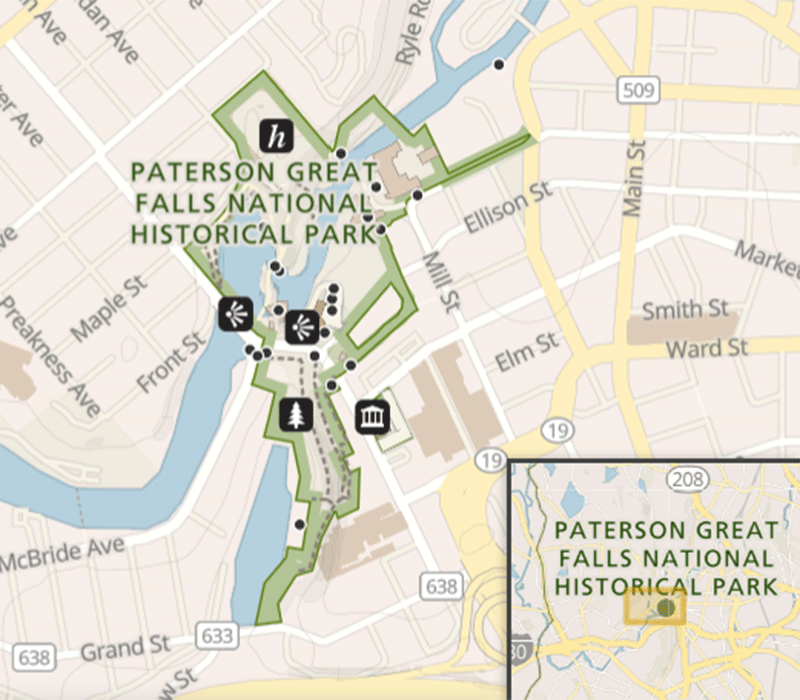
USGS Investigators: Pamela Reilly
NPS Investigators: Darren Boch
| 2022 |
|---|
| $50,000 |
NPS Park: Paterson Great Falls National Historical Park
USGS Center: New Jersey Water Science Center
States: NJ
The Paterson Great Falls National Historical Park (PAGR) sits adjacent to the Passaic River in the historic city of Paterson, New Jersey. Established in 2011, the park consists of natural, cultural, and historic resources associated with the Great Falls of the Passaic River, the hydropower system it feeds, and a 220-year period of industrial history. The geologic formation created an extraordinary 77-foot fall into a naturally occurring 280-foot chasm, the Great Falls, which is the second largest waterfall (by volume) east of the Mississippi River. The power of the river was harnessed, resulting in a concentration of industrial buildings and structures, illustrating the growth and evolution in industrial planning, architecture, and engineering in the United States from 1792 to 1945.
The park is situated in, and serves, one of the most ethnically and socioeconomically diverse communities in the country. Today, there is a tremendous opportunity to introduce diverse communities to the park and the National Park Service (NPS) through outreach, on-site programs, youth work programs, and the enhancement of educational and recreational opportunities within the park’s boundaries, and to do so in cooperation with both public and private partners. Although the PAGR provides visitors the opportunity to experience the natural beauty of the Great Falls and explore the rich historic industrial, cultural, and recreational landscape, due to the park’s young age and limited resources, the park does not have the natural resource data needed to guide future park management and planning decisions. Therefore, it is extremely important to gather and evaluate existing information about the park’s fundamental natural resources, particularly water-quality, to help inform future park priorities. Currently, the PAGR does not have the most basic baseline water-quality data needed to guide future management decisions.
This study provides an evaluation of the historic water quality in the park to build an understanding of what is needed to sustain healthy aquatic ecosystems, support the recreational purposes of the park, and attain all designated beneficial uses. This baseline water-quality inventory greatly enhances the ability of the park to protect its outstanding resources by identifying park priorities concerning water management, delineating water resources issues, identifying alternative actions and clarifying responsibilities of park staff, supporters, and the local community.
